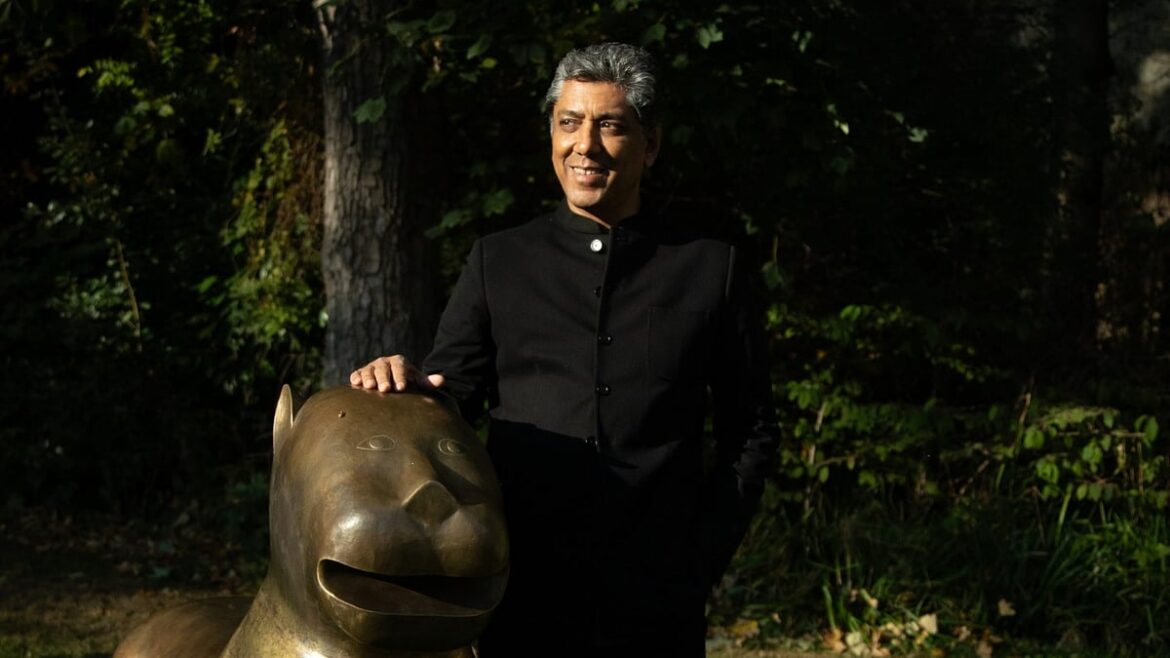“The Soul Garden reimagines India’s ancient animal fables as a contemporary dialogue between art, design, and ecology. Drawing from India’s deep reservoir of culture and philosophy, where animals are revered as sentient, sacred beings, it invites us to see them not as static symbols, but as storytellers, philosophers, and mirrors of human nature,” he says.
“Conceived as both a physical and metaphysical space, the garden becomes an inner landscape — one that, like nature itself, calls for care, curiosity, and renewal.”
Goyal says through sculpture, smell, and ritual, The Soul Garden unfolds as a meditative exploration of empathy, stewardship, and coexistence. Each piece serves as a fragment of this living fable, where mythology, craft, and consciousness converge to reflect on humanity’s relationship with the natural world.
“In many ways, The Soul Garden extends the studio’s philosophy of creating works rooted in Indian tradition yet attuned to contemporary sensibilities. It reminds us that when art and design emerge from a place of spirit, they transcend the material and nurture both the self and the environment.”
Visitors to The Soul Garden encounter an immersive sensory world set within the historic gardens of L’Hôtel de Maisons. The experience unfolded through sculpture, smell, and performance — each element deepening the sense of reflection and connection. Daily readings of the Panchatantra fables by actors from Cours Florent (one of world’s leading drama schools situated in Paris) transformed the space into a living narrative, where art becomes ritual. The garden becomes a sanctuary of sight, sound, and smell—an evocative dialogue between myth and materiality.
“For me, presenting at Design Miami/Paris was both a milestone and a moment of resonance — bringing an Indian narrative to one of the world’s foremost platforms for collectible design,” says Goyal. “Surrounded by leading global creators and historic craftsmanship, The Soul Garden offered a rare opportunity to share a deeply personal and cultural story from India with an international audience, translating ancient wisdom into a sensory, contemporary experience that invited universal reflection.”
Goyal’s installation featured four animal sculptures, each embodying a specific virtue drawn from Indian fables: Gaja and Karabha (Elephant and Baby Elephant) — wisdom, memory, and communication; Kurma (Tortoise) — endurance, patience, and cosmic time; Vyaghra (Tiger) — power, stealth, and protection and
Nakra (Crocodile) — strength, adaptability, and primal force.
“The Panchatantra has always fascinated me, not only as a collection of fables but as a timeless philosophy of life. These stories, though simple in form, carry profound insights into human behavior, morality, and coexistence,” he says. “Each piece is crafted using the studio’s signature Hollowed Joinery technique in sheet metal, with repoussé panels that reveal miniature Panchatantra scenes. Scaled for interiors, the sculptures take the form of consoles, benches, coffee tables, or stools, merging functional design with the gravitas of art.”
Berlin-based olfactory artist Sissel Tolaas collaborated with the Studio to bring a “deeply sensory and emotional” dimension to The Soul Garden. The collaboration emerged from a shared curiosity about the unseen, how smell, like myth or memory, can evoke presence and emotion beyond the visual. “I had long admired Tolaas’s ability to translate environment and emotion into smell, and when The Soul Garden was conceived, inviting her into the process felt instinctive. Together, we explored the question: if animals could speak through smell, what stories would they tell?” Tolaas visited Goyal’s studio in Noida, collecting molecular traces from the act of making itself, the heat of metal, the polish of patina, the imprint of human touch, and combined these with smell profiles inspired by each animal’s natural habitat.
“Chemical signals, among the earliest forms of communication between living beings, became the foundation for her process. Using a blend of nanotechnological and analogue diffusion systems, these smells now permeate the installation, layering from one sculpture to the next and mirroring the invisible bonds shared through air across species,” Goyal says.
“The result is a living, breathing ecosystem where sculpture and smell intertwine, transforming the intangible into emotion, memory, and connection. The greatest challenge lay in balance and precision. Smell is ephemeral and unpredictable; it can easily overwhelm or fade too quickly. The team worked closely to calibrate the diffusion systems so that the smells lingered subtly within the environment, like an invisible thread complementing the visual and spatial experience. Ultimately, it was about harmony, between material, sound, and smell, so that visitors experienced The Soul Garden as a multi-sensory journey rather than a static exhibit.”


Comments are closed.